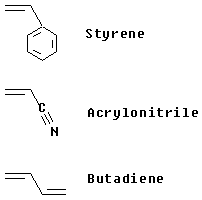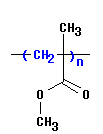Materials
Introduction
On this page you can get some information about what materials you can use for LDbooms. We try to refer every material that is used or we know of. The density declared in the chapters is calculated by Tibor measuring volume and weight of samples.
If you have additional knowledge or disagree, please contact us.
Wood (Birch Cross Ply 10 layers on 5mm of Finland)
 |
Density: (0.801 +- 0.026) g/cm3
You know wood, the thing trees are made of. It is a great material to begin LD throwing. Herb Smith made 100m throws with wood. And Michel Dufayard, too and ... |
| Advantage |
Easy to work with.
The glue layers show how accurate you are working. |
| Disadvantage |
Breaks at stronger throws/if there is too much lead on it.
Sensitive to humidity
Low Density |
Paxolin
Density: (1.359 +- 0.043) g/cm3
Other names: Pertinax, Bakelite, Hartpapier,
...
Commonly used for LDBooms. It is made out of paper impregnated with phenolic-formaldehyd resin. If you are interested in chemical formulas, watch this:
There are different types of Paxolin. Be sure to use to paper impregnated type as the cloth-type [Density: (1.314 +- 0.044) g/cm3] is not stiff enough (although it is able to resist
a higher impact than the paper-type).
| Paper impregnated |
Cloth impregnated |
 |
 |
| Advantage |
Very stiff
Interesting density
Cheap |
| Disadvantage |
Very dangerous dust producing; Health (Cancer) risk
Can break if there is too much lead (20g+) or the boom is not thick enough
Attracts water and looses in the course the stiffness (always seal the boom with a coat of water resistant color)
Needs powertools at least for cutting |
Glassfiber/Epoxy Composite
| Advantage |
Stiffness
Strength (we had no fractures up to now)
Toughness (resistant agains severe impacts)
Good density
Easy to shape |
| Disadvantage |
Glassdust is also dangerous; Beware
Needs powertools
Special cutting-equippment needed
Can get habitual tuning
UV-sensitive ?
expensive |
Carbonfiber/Epoxy Composite
Density: 1.5 g/cm3 (not measured by myself)
Be carefull: the fibers are so thin, they can stick in your body and you will not even feel it, at first. Use gloves and cover all your body. Don´t work without dust-(and gas)mask!
| Advantage |
verrry stiff
incredible strength
toughness, almost unbreakable |
| Disadvantage |
verrry dangerous dust
Special cutting-equippment needed
needs powertools
verrry expensive |
Aluminium (alloys)
Density: (2.550 +- 0.092) g/cm3
Beware! Very dangerous! Metal booms are not allowed in competitions.
| Advantage |
Heavy
Stiff |
| Disadvantage |
Did you see Mad Max II?
Needs powertools
Gets easily warped |
We only used pure-Al boards, which is very soft and therefore not fit for boomerangs. High-strength Al-alloys, however, are better. Christian Jabet, a frechman, used 'Zicral', a chromium and zirconium alloyed aluminium, for his V-shaped boomerang and made an inofficial world record of 149m. It is said that he had an anvil and a hammer to flatten his boom after crashes.
Circuitboard
 |
Density: (2.041 +- 0.088) g/cm3
What I mean with circuitboard (it's used for computer mainboards and stuff like that.) is a lamination of G10 and coppersheets. This material is quite new to the boomsport. For LD it would be interesting in thickness of 3 to 3.5 mm. Unfortunatly we were unable up to now to acquire such sheets. |
Materials not used for LD, but other boom events:
Unsaturated Polyester (UP) Resin
 |
Density: 1.25 g/cm3, reiforced with glass fibers: 1.5-1.8 g/cm3
Usually, the material is reinforced with glassfibers. We saw it being used for medium-range boomerangs. Density and stiffness is comparable to GFEC. Unfortunaltely, it breaks more easily
and is difficult to tune. We have not built LD models with UP-resin, it seems to be an interesting material for this event though. |
Polypropylene (PP)
 |
Density: 0.9 g/cm3 (not measured by myself)
It is not stiff. It is a thermoplastic material:
PP is commonly used for short range tribladers, for instance Eric Darnells Tri-Fly. In warm weather it is soft and in cold conditions it gets brittle. There is a polypropylene material with additional glassfibers.
Density: (1.174 +- 0.038) g/cm3 |
Acrylonitrile-Butadiene-Styrene-Copolymer (ABS)
 |
Density: 1.0 g/cm3
It is a impact resistant Polystyrene.
The new Tri-Fly from Eric Darnell is ABS. It is an excellent material for short range boomerangs. It is stiff, machined easily, resistant against humidity and does not loose its shape in warm weather. |
Polyvinylchloride (PVC)
 |
Density: ~1.4 g/cm3
It is rather heavy for a thermoplastic material.
We did not often see PVC used for booms. But why not ? Try it! It is probably especially fit for wind boomerangs, considering the high density. |
Forex
Density: (0.669 +- 0.021) g/cm3
It is a foamed PVC.
Forex is very light and flabby. It breaks rather easily. Forex is excellent, however, for small fun or beginners boomerangs - easy to throw and catch.
Acrylic glass
 |
Density: (1.161 +- 0.040)g/cm3
Other names: Polymethylmethacrylate (PMMA), Plexiglass
It is a substitute for glass but less brittle, but still brittle. It is nice to have a translucent boomerang, but otherwise: forget it. |
Polyamide (PA)
 |
Density: (1.148 +- 0.032) g/cm3
Other names: Nylon
Similar to Polypropylene, but even more flabby. Besides it takes up humidity. |
Polycarbonate (PC)
 |
Density: 1.5 g/cm3
Other names: Makrolon
It is also translucent and used for the fabrication of compact disks. We have no experience with this type of material. |
|